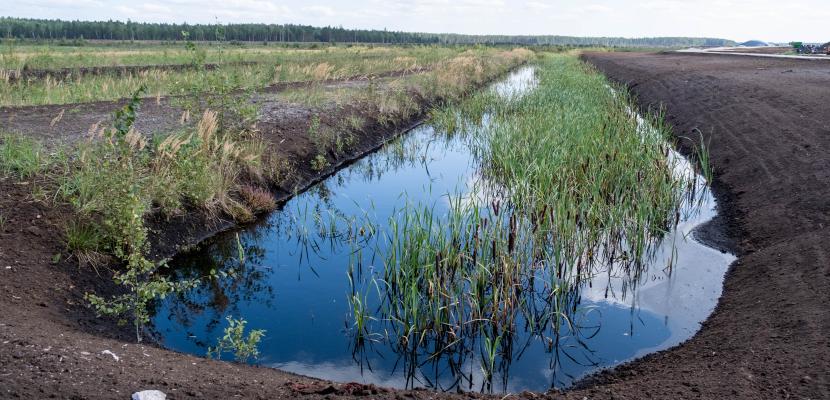
Rewetting practices for degraded peatlands to boost biodiversity and mitigate climate change

About this good practice
Following the Paris Agreement, climate neutrality is targeted by 2050. The Common Agricultural Policy recommends rewetting organic soils and peatlands, which also supports the EU Green Deal’s aims to address climate risks like floods and droughts.
In Latvia, peatlands cover about 12% of the land, with 39,500 hectares considered degraded and in need of restoration. To meet the demand for substrates, 4% of Latvian peatlands are used for peat extraction. Continued drainage risks releasing stored carbon from remaining peat, increasing greenhouse gas emissions, thus mining licenses require peat companies to restore these areas.
Research institutions and NGOs in Latvia have partnered to co-create and test the most suitable paludiculture practices for degraded peatlands: Growing sphagnum moss and restoring peatland habitats to boost biodiversity and support native species; Cultivating berries (like cranberries, lingonberries and blueberries); Utilizing rewetted areas for bee pastures and growing medicinal plants (like marsh trefoil, sweet flag, sweet gale, meadowsweet); Applying agrovoltaics, thus integrating wetland agriculture with solar energy production.
Key stakeholders include policymakers in climate and environmental sectors, and municipalities managing degraded lands. The primary beneficiaries are local residents who gain from enhanced ecosystem services and a stronger local economy.
Expert opinion
Resources needed
Several EU funded projects like EU LIFE Restore (total budget 1.8M EUR), LIFE Peat Restore (total budget 6M EUR). E.g. growing sphagnum costs start from 25-39tk EUR per hectare.
Evidence of success
Estimations suggest that rewetting and paludiculture on drained peatlands can prevent CO₂ emissions, with 1 hectare capturing up to 7 tons of CO₂ annually. These practices enhance ecosystem services, biodiversity, and resilience to floods and droughts, while supporting the local economy, tourism, and rural repopulation. Paludiculture aligns with Green Deal goals by promoting biodiversity, generating new raw materials, and increasing peat accumulation and carbon storage.
Potential for learning or transfer
This good practice demonstrates successful collaboration between research institutions, NGOs, and peatland management companies. Jointly funded by national and European projects, the cooperation targets degraded peatlands for rewetting and testing paludiculture innovations. It prioritizes rewetting degraded peatlands in areas with lower agricultural or forestry value, working with local stakeholders to create eco-friendly solutions, such as integrating rewetted areas into sustainable agricultural practices. Key success factors for transfer include establishing collaborative networks, securing initial project funding, and aligning interests. Challenges may involve adapting practices to specific regional ecosystems and obtaining long-term commitments from stakeholders. By fostering similar cooperation and innovation, other regions could achieve sustainable peatland management that benefits both industry and the environment.
Further information
Good practice owner
You can contact the good practice owner below for more detailed information.

